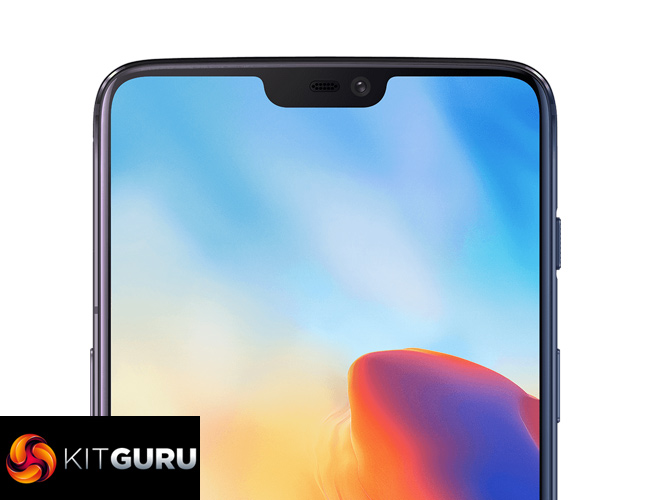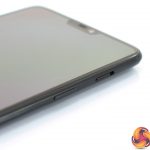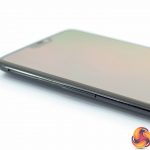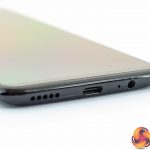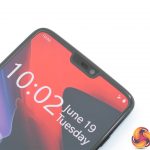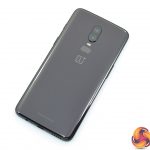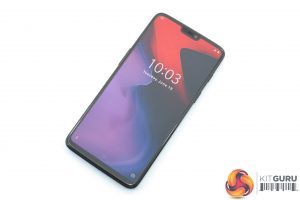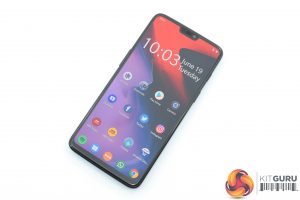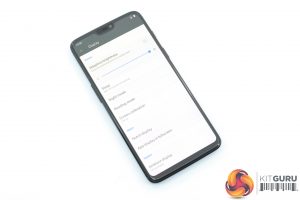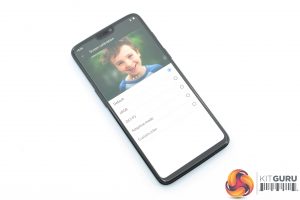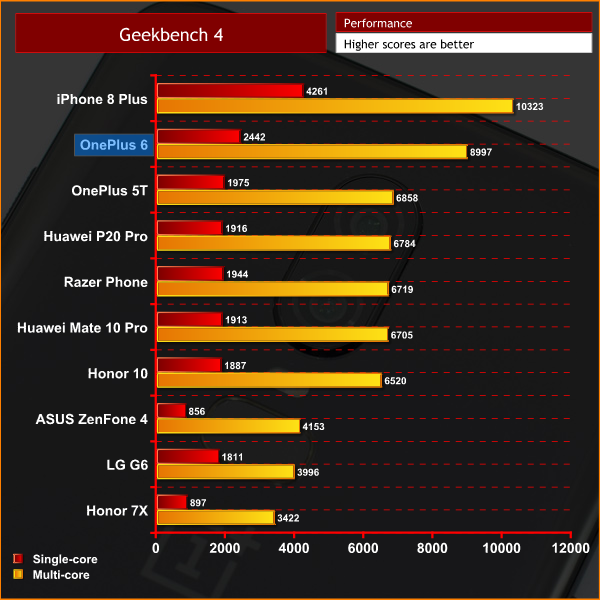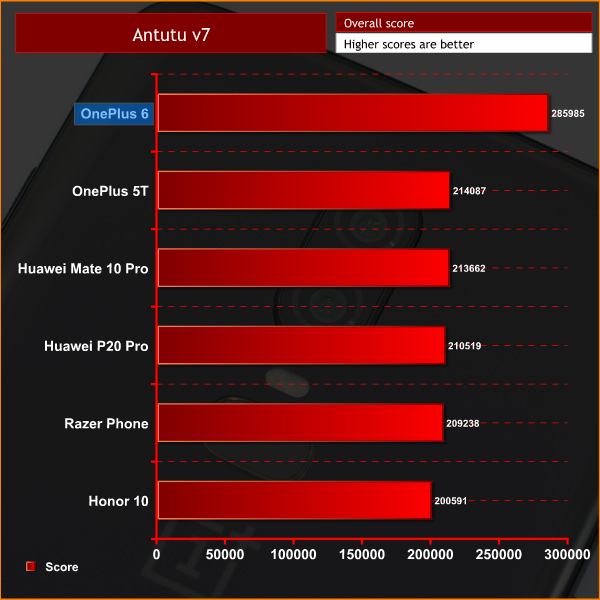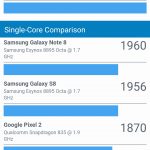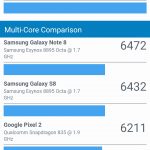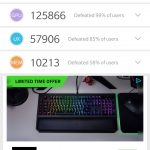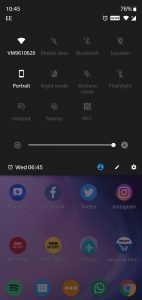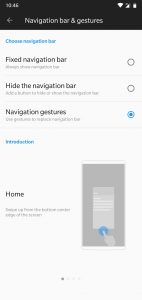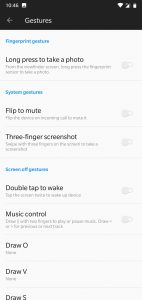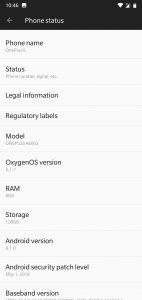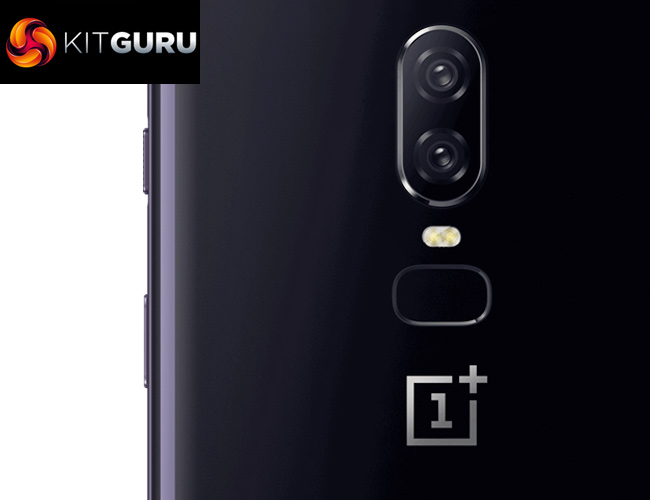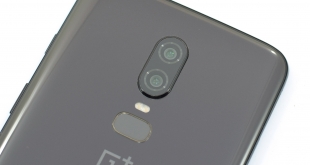
With its bi-yearly release cycle now well established, mid-2018 sees OnePlus release its latest flagship – the OnePlus 6. Things have changed a fair bit since we reviewed the OnePlus 5T earlier this year, with a larger design being the most obvious difference, though improvements have also been made to the internal components and dual camera system. With a slightly higher price of £519 for the 8GB/128GB model, is this a compelling option for those who want flagship specs without the flagship price?
Despite the price increase over the OnePlus 5T, the OnePlus 6 is still considerably cheaper than rivals like the Samsung Galaxy S9+ or Huawei P20 Pro. That is despite the fact it sports Qualcomm's latest Snapdragon 845 processor, a huge 8GB of RAM and an AMOLED display – all features we would associate with pricier flagships. The model we are reviewing today is the 8GB/128GB model priced at £519, but you can save £50 by going for the 6GB/64GB SKU which potentially represents even better value.
Specification
- Dimensions: 155.7×75.4×7.75 mm
- Weight: 6.2 ounces (177g)
- Screen: 6.28in optic AMOLED
- Material: Glass
- Colors: Mirror Black/ Midnight Black/ Silk White
- Operating System: OxygenOS based on Android™ Oreo
- CPU: Qualcomm® Snapdragon 845 (Octa-core, 10nm, up to 2.8 GHz), within AIE
- GPU: Adreno 630
- Camera: 16MP front, 16 + 20MP rear
- Notification Light: RGB LED notification light
- Vibration: Haptic vibration motor
- RAM: 6 GB / 8 GB LPDDR4X
- Storage: UFS 2.1 2-LANE 64 GB / 128 GB / 256 GB
- Sensors: Fingerprint, Hall, Accelerometer, Gyroscope, Proximity, RGB Ambient Light Sensor, Electronic Compass, Sensor Core
- Ports: USB 2.0, Type-C, Support USB Audio, Dual nano-SIM slot, 3.5 mm audio jack
- Battery: 3300 mAh (non-removable) Fast Charging (5V 4A)
- Buttons: Gestures and on-screen navigation support Alert Slider
- Audio: Bottom-facing speaker, Noise cancellation support, Dirac HD Sound®, Dirac Power Sound®
- Unlock Options: Fingerprint, Face Unlock
Design
Note: if the above images are not displaying properly, you may need to disable your ad block software as they are known to interfere with our display code.
At a distance, the OnePlus 6 may look quite similar to the 5T before it – but it is clear quite a lot has changed when we get a closer look. Firstly, the phone has a larger 6.28in display, and yes it does have a notch, though it is quite compact and can actually be ‘disabled' via the settings menu. Secondly, the rear of the phone is now glass, rather than the aluminium panel of the 5T. Interestingly, however, the OP6 does not support wireless charging which is one of the benefits to using glass panels.
Still, the phone feels really good in the hand and I think it is quite attractive – I personally like the look of glass-backed phones, though this is obviously subjective. The sample shown above is the ‘mirror black' option which certainly looks quite glossy and is a fingerprint magnet, though there is also the ‘midnight black' option which has more of a matte finish – as matte as glass can be, anyhow.
On the back of the phone, the dual camera setup has also been moved to a central position, with the fingerprint scanner positioned underneath the two lenses. The scanner is no longer a true circle, instead it is more ovular in shape. Personally, I much prefer the circular design as it feels more natural when placing your finger to unlock the phone, but this scanner will still get the job done.
Elsewhere, the classic OnePlus alert slider is on the right-hand edge of the phone, just above the power button. The two volume buttons can be found on the left-hand edge, below the SIM tray which supports dual nano SIMs but no microSD card. On the bottom edge we find the USB-C port, a 3.5mm jack and a single downward firing speaker.
Lastly, it is also worth noting the fact that the OnePlus 6 does not have an official IP rating for water and dust resistance. OnePlus says the phone is water resistant, and from the tear downs I have seen of the OnePlus 6, it looks like the phone has the necessary foam and rubber linings to protect it from accidental submersion. It is likely OnePlus did not go through the official IP accreditation process purely to save on costs, though it does mean I wouldn't be quite as cavalier with the OnePlus 6 as you might with the IP68-rated S9.
Display
As mentioned, the OP6 sports a larger 6.28in display. Thanks to the notch design, the physically longer panel means the resolution has also been bumped up to 2280 x 1080 – a 19:9 aspect ratio.
2280 x 1080 across the 6.28in screen gives a pixel density of 402 PPI, which is essentially the same as the previous-gen 5T. This means it is generally sharp but lacks the absolute crispness of 1440p displays found on the likes of the S9 or Pixel 2 XL. For the majority of users, though, it will be plenty sharp enough.
Arguably more importantly, the screen uses an AMOLED panel, and I have to say it is very impressive for the price. Colours are nice and punchy, contrast is excellent and the range of brightness is also good enough that using the phone outdoors is no problem at all. In my opinion, Samsung still makes the best smartphone panels at the moment – but the OP6 certainly isn't far off.
Lastly, the phone also gives you a few options when it comes to colour calibration. For general use, I fount the default mode to give the most pleasing colours and white balance, though there are also sRGB and DCI-P3 modes, plus the option to set a custom colour balance.
Performance
As mentioned, the OnePlus 6 sports the latest Snapdragon 845 processor, 8GB of RAM and 128GB of internal storage.
Performance according to our synthetic benchmarks is top-notch, and I can say that definitely carries over to real-world usage. In fact, I would say the OnePlus 6 is probably the nippiest phone I have used to date – apps load very quickly, switching between open apps is done flawlessly and you will also be able to use the OP6 for mobile gaming and have a top experience.
Both the fingerprint scanner and facial unlock feature are rapid, too. As mentioned, I would've preferred the fingerprint scanner to be circular in shape, but that does not stop it being very fast and reliable. Using the facial recognition is not quite as fast as the fingerprint scanner, but relative to other smartphones like the P20 Pro, it still very quick and is very reliable in low-light situations, too.
The last thing to mention here is the single downward firing speaker. This isn't something we always include, but it is worth touching on it here, simply for the fact that it the weakest area of the phone. In short, the speaker is quite tinny, with a sibilant overall sound that does not make watching videos or listening to music a good experience. OK, it is not awful – you can still hear what is being said – but clearly, the speaker is one primary area which OnePlus has skimped on to keep the price as low as it is.
Software
Moving onto software, the OnePlus 6 is running the latest version of OxygenOS – OnePlus' skin that runs on Android Oreo 8.1. This is a very lightweight skin with a focus on being fast and clean – there is no bloatware here, everything has a purpose which I love.
That's not to say there aren't extra features included, but they all add something useful over stock Android. My favourite of these features is the new gesture support. Instead of using the traditional nav buttons, the OnePlus 6 now supports gestures to get around – just swipe up from the middle of the phone's bottom edge to go to your home page, swipe up and hold to get to your open apps, and then swipe up from the left or right sides of the bottom edge to go back. I have found using the gestures really intuitive, and really fast as well, so it really adds to the overall nippiness of the phone. And of course you maximise what is displayed on the screen by removing the nav buttons.
Other extra features include the ‘double tap to wake' function which I use to check the time at night – as you don't have to pick the phone up – as well as ‘three finger screenshot' where you swipe down with three fingers on the screen to take a quick screenshot.
One thing I would like to see, however, is the ability to remap the alert slider. Personally, I do use the slider to quickly switch from ‘ring' mode to ‘silent' when going to bed, but it would be great to use it to quickly open new apps or set the phone to airplane mode. I can appreciate the alert slider is quite a distinctive feature of OnePlus phones, so the company may be unwilling to compromise what they see as a unique feature, but surely giving users the extra control would only be a good thing.
On the whole, though, I really like OxygenOS. It is clean, fast and makes some good additions to the Android experience. It doesn't do things just for the sake of it – everything feels thought through – but what changes it does make feel genuinely useful, so good job OnePlus.
Camera
Like the 5T, the OnePlus 6 has two rear cameras – one 16MP and one 20MP sensor. Where the 5T's secondary camera was dedicated to low-light performance, though, the secondary shooter on the OP6 is purely for depth-sensing when using portrait mode. Both lenses on the OP6 also have a f/1.7 aperture.
Note: if the above images are not displaying properly, you may need to disable your ad block software as they are known to interfere with our display code.
Now, this is where things get very interesting. Previously, the camera has definitely held OnePlus smartphones back – and I said as much in my review of the 5T. With the OP6, this is no longer the case – far from it. It is a camera I really like.
This is thanks to the sharp, detailed images and very natural colours and processing. Unlike the P20 Pro, which is guilty of over-processing and over-saturation, photos from the OnePlus 6 look natural and life-like.
Portrait mode is also quite successful, with generally impressive edge detection and a smooth bokeh effect in the background. It can occasionally look a touch artificial if the subject is too far away, but 9 times out of 10 I was pleased with the results of the portrait mode.
I still wouldn't put the OnePlus 6 at the same level as the Pixel 2, though – detail does go steadily downhill in low-light scenarios, while dynamic range is not the best – but it is overall a very solid camera that is capable of taking some fantastic shots.
Battery
The last area to touch on is battery life. The OnePlus 6 sports the same 3300 mAh cell as its predecessor, and it shows – I wasn't overly impressed with the 5T's battery life, and the same can be said for the OP6.
You will still get a full day's use from it – typically, I would get to the end of the day with around 10% battery left, after around 5 hours of screen-on time – but compared to the Huawei Mate 10 Pro and P20 Pro which have 4000 mAh batteries, it is nothing special.
Dash Charge is as good as ever, though, and I found I got a 53% charge in just 30 minutes. This means you can quickly top-up the OnePlus 6 if you are running low on battery and need a boost.The OnePlus 6 is a fantastic phone, and OnePlus' best effort yet.
I'll start with the negative points, and the way I see it, there are three main drawbacks to the OnePlus 6. Firstly, it has a glass back but does not support wireless charging, while it also lacks an official IP water and dust resistance rating. Lastly, the single downward firing speaker is poor.
Now, those issues may be annoying – some more so than others, depending on your priorities – but they pale in comparison to all the OnePlus 6's strengths, especially when you consider how well priced the phone is.
Not only is it incredibly fast and responsive – it's the fastest Android experience I've ever had – but the re-design gives you more screen in a body the same size as the OnePlus 5T. The screen, too, is excellent – it is not quite as good as Samsung's OLED panels, but it makes flicking through photos or videos a great experience.
Then there is the clean and attractive software to consider, as well as the intuitive new gesture controls and rapid facial recognition technology. All of this in a phone that is just £519.
OnePlus phones have always offered top specs at lower prices, but there has usually been one fairly significant catch – the camera – and I said as much in my 5T review. With the OnePlus 6, however, this has changed – it may not be quite at the level of the Pixel 2 for instance, but you will still be able to take some cracking photos with the OnePlus 6 which is great to see.
All in all, we are just incredibly impressed with OnePlus 6. It does so many things well – at a significantly lower price than its main rivals – that we can't help but give it our ‘must have' award. It's a proper flagship at a more affordable price.
You can buy one directly from OnePlus HERE.
Pros
- Very fast.
- Gesture control works brilliantly.
- Camera is much improved.
- Fast fingerprint scanner and facial recognition.
- Clean software.
- Impressive display.
- Very well priced.
Cons
- No wireless charging.
- Poor speaker.
- No official IP rating.
KitGuru says: The OnePlus 6 is a top smartphone, and right now I'd say it is the fastest Android device going. If you want a terrific all-round package for a few hundred pounds less than the likes of the S9 and P20 Pro, this is it.
Be sure to check out our sponsors store EKWB here
 KitGuru KitGuru.net – Tech News | Hardware News | Hardware Reviews | IOS | Mobile | Gaming | Graphics Cards
KitGuru KitGuru.net – Tech News | Hardware News | Hardware Reviews | IOS | Mobile | Gaming | Graphics Cards


